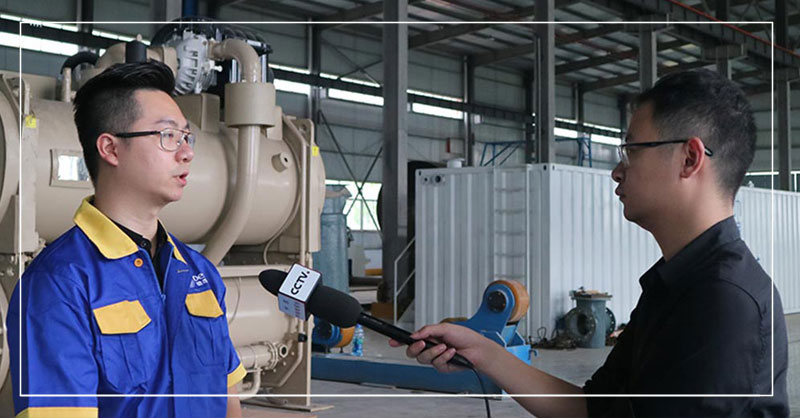-
周一 至 周六
9:00早上 - 5:30下午 -
邮箱
service@desunep.com -
联系电话
0663-8854140
周一 至 周六
9:00早上 - 5:30下午邮箱
service@desunep.com联系电话
0663-8854140
近日,一项利用移动网络数据估算城市碳排放和空气污染水平的研究新近出炉,据说此法可以大大降低实施《巴黎协议》的成本。
•该研究针对来自移动网络数据的移动模式进行分析,用以对城市应用的不同交通运输模式进行评估,以此对相应的污染情况和污染成因进行总结。
•这种创新的方法可使科学家在估算城市地区空气污染物浓度时的准确率达到77%。
•此法可以扩展延伸,效率高且成本低,有助于世界各地的城市进一步了解并治理温室气体(GHG)排放。

大数据分析公司和苏黎世联邦理工大学带领Teralytics公司、Next电信公司以及可持续发展解决方案提供商南极集团在德国的纽伦堡进行了一项研究,研究发现,移动网络数据分析可以作为一种有效又省钱的二氧化碳和氮氧化合物估算方法。为此,Teralytics对用户通过手机接打电话、收发短信息和浏览网页生成的电信数据进行了匿名收集与研究,借以完善原始数据,通过人的移动模式去分析其经常乘坐的不同交通工具,如火车或汽车等。将这些信息与不同运输模式的排放量数据结合在一起,他们就能估计出城市空气污染和温室气体的排放量

图一:Teralytics公司和Next电信公司在德国有多个涉及到消费者数据的项目。出于社会和经济利益将数据加以应用,可以利用科学加快气候保护的步伐。
因为每种形式的运输方式所产生的二氧化碳和氮氧化物排放量是唯一的,所以对城市运输模式的了解是弄清排放源的重要方式。在纽伦堡进行的研究表明,利用这些信息对城市空气污染物浓度进行估算,其精确率可高达77%。这些发现,为进一步研究大数据用于理解和最终解决环境问题(如世界各地城市中空气污染情况)带来了希望。尤其重要的是,较之制作精良、需要精心维护的测量站,分析和解读数据的成本是非常低廉的。因此,这种新方法可以推广为全国范围内的数据分析。
“虽然我们现在的城市生活方式导致了有害温室气体的产生,但同时也产生了大量的行为数据。我们在Teralytics的使命就是利用这些数据造福社会,” Teralytics的首席执行官乔治.博尔茨指出,“我们从纽伦堡的调查结果显示,这些数据可以让城市规划者看到人类流动是如何产生污染的。这是有效设计和实施清洁空气及低碳战略的重要组成部分。我们期待着对此能有进一步的研究发现。”
采用三重流程,匿名汇总来的数据首先会被Teralytics的数据科学家转化为运动流,并在所需分析的时间段内,被识别成120万条交通路线,如图2所示。然后,可持续发展解决方案专家南极集团将根据德国联邦环境部提供的关于不同交通工具排放量水平的数据,利用大气模型来估计不同运输方式所造成的空气污染水平。在第三个步骤中,还将对从空气污染测量站得到的现有数据与该方法得到的数据进行对比分析,以此确认新方法的精准度情况。经此发现,测量值精准率的关联度高达77%左右。

图二:纽伦堡邮编区域内的交通流历史数据。
纽伦堡试点研究的结果为进一步研究构成了良好的基础。继此成功之后,该项目还从气候KIC的低碳城市实验室得到金融支持,将各大城市、企业、学术界和非政府组织召集在一起,共同提高环境和社会影响。有了这些支撑,研究伙伴们可以进一步将方法进行完善,聚焦于短途旅行路线,并将局部地区的排放因素,如机场、大型活动场所和各类道路车辆(电动汽车和越野车)等考虑在内。
此外,交通堵塞和红灯等因素的影响将被将考虑在内,以便更准确地估算出一个城市的空气污染水平。
“这项试验的研究结果超过了我们的预期,” Teralytics的业务发展与合作伙伴关系维护专员马克西米连.格罗斯说到 “我们有信心将此产品快速扩展到世界各地,支持城市规划者们净化空气,并且以最低的成本实现巴黎协议的目标。”
除此研究之外,Teralytics公司、德国电信和弗朗霍夫研究学会针对移动网络数据的应用研究也取得了相关成果,其中包括斯图加特交通方面的智能数据分析。
关于研究的其他评论:
“全球约70%的温室气体排放都来自城市,这意味着它们在气候保护中起着关键作用。在利用不断产生的数据方面,如移动网络数据在测量和减少城市污染水平领域方面,我们看到了巨大的潜力,”南极集团首席执行官雷纳.休博格如是说。
NEXT电信负责高级数据分析业务的总经理弗洛瑞安.马卡特指出:“在纽伦堡的试点项目已经清楚地显示出了匿名的移动网络数据为环境带来的附加价值。这是来自人与人之间的数据,我们从试点结果看到了巨大的潜力,即将开始进行下一阶段的研究。我们的目标是开发一款产品,供德国城市、德国各州及德国联邦政府使用,以便更好地应对对排放污染“。(本文系中国环保网www.chinaenvironment.com 高晶独家编译,如需转载,请注明出处)
原文:Interesting study on how to use big data to reduce Green House gas Emissions
New study leverages mobile network data to estimate levels of carbon emissions and air pollution in cities, an approach that could substantially reduce the cost of implementing the Paris Agreement.
• The study analyses mobility patterns derived from mobile network data to estimate the usage of different transport modes within a city and derive conclusions about the respective pollution they cause.
• This innovative methodology allowed scientists to estimate the concentration of air pollutants in urban areas with up to 77% accuracy.
• The method could provide a scalable and cost effective way to help understand and combat greenhouse gas (GHG) emissions in cities worldwide.
Big data analytics company and ETH Zurich spin-off Teralytics, Telefónica NEXT and sustainability solution provider South Pole Group conducted a study in Nuremberg, Germany that reveals the analysis of mobile network data as an effective way to estimate CO2 and NOX emissions in urban areas at very low cost. To achieve this, Teralytics examined aggregated and anonymised data, which is generated when mobile devices communicate with Telefónica’s mobile communication cells while users make calls, send texts or browse the internet. Teralytics was able to refine this raw data into human mobility patterns to understand how the different modes of transport, for instance trains or cars, are frequented. Combining this information with data on the emissions of the different transport modes, the three entities were able to estimate air pollution and GHG emissions in the city.

As each form of transportation produces a unique amount of CO2 and NOX emissions, understanding urban mobility patterns is vital to understand the source of emissions. The study in Nuremberg used this information to estimate with up to 77 per cent accuracy the concentration of air pollutants in the city. These findings encourage further exploration of how big data can be used to understand and ultimately solve environmental issues such as air pollution in cities across the world. This is particularly interesting with regards to the lower cost of analysing and interpreting data compared to the higher cost of production and maintenance of elaborate measuring stations. The novel approach could thus allow an ongoing analysis on a nationwide scale.
“While our contemporary urban lifestyles result in the generation of harmful greenhouse gasses, it also generates large amounts of behavioural data. Our mission at Teralytics is to use this data for the benefit of society,” says Georg Polzer, CEO of Teralytics. “Our findings from Nuremberg showed that this data can be used to give city planners insights into how human mobility contributes to pollution. This is a vital part to efficiently design and implement clean air and low carbon strategies. We are looking forward to further exploring this opportunity.”
Using a three-level process, the fully anonymised and aggregated data was first transformed into movement flows by the data scientists at Teralytics, identifying over 1.2 million transportation routes during the analysed time period, as depicted in Figure 2. The sustainability solution expert South Pole Group then used an atmospheric model to estimate air pollution levels caused by the usage of the different modes of transportation, taking into account meteorological data and information on the respective traffic carriers’ emission levels from the German Federal Ministry for the Environment (BMUB). In the third step, the accuracy of the method was examined by comparing the findings with existing data from air pollution measuring stations. The values measured at these stations were found to correlate up to 77 per cent with those from the Teralytics’ calculations.

The results of this pilot study in Nuremberg constitute a sound basis to further develop the methodology. Following its success, the consortium was able to secure financial support from Climate KIC’s Low Carbon City Lab (LoCaL), an initiative that brings together cities, business, academia and NGO’s to deliver high environmental and societal impact. With this backing, the research partnership will expand and improve the methodology, focusing on short travel routes and taking into account local emission factors like airports, large-scale events, and types of vehicles on the road (i.e. electric cars and SUVs). Moreover, the influence of factors such as traffic jams and red lights will be taken into account in order to make even more accurate estimations of the air pollution levels in a city.
“The results from this pilot study exceed our expectations,” says Maximilian Groth, responsible for Business Development & Partnerships at Teralytics. “We are confident that we will soon be able to scale this product to cities worldwide to support urban planners in making our air cleaner and achieving the goals of the Paris Agreement at the lowest possible cost.”
This research follows other successful studies on usage of mobile network data, including a smart data analysis for transport in Stuttgart by Teralytics, Telefónica Germany, and Fraunhofer IAO.
Additional comments on the topic:
“Approximately 70 per cent of global greenhouse gas emissions are generated in cities, meaning that they play a key role in climate protection. We see great potential in the use of continuously generated data, such as mobile network data, to measure and reduce pollution levels in cities." States Renat Heuberger, CEO of South Pole Group.
Florian Marquart, Managing Director of Telefónica NEXT for Advanced Data Analytics: “The pilot project in Nuremberg has clearly shown the specific added value of anonymised mobile network data for the environment. This is data from people for people. We see great potential in the results and will start the next phase of our research. The goal is to develop a product that German cities, German states and the German federal government can use to better face the challenges of emissions pollution”.